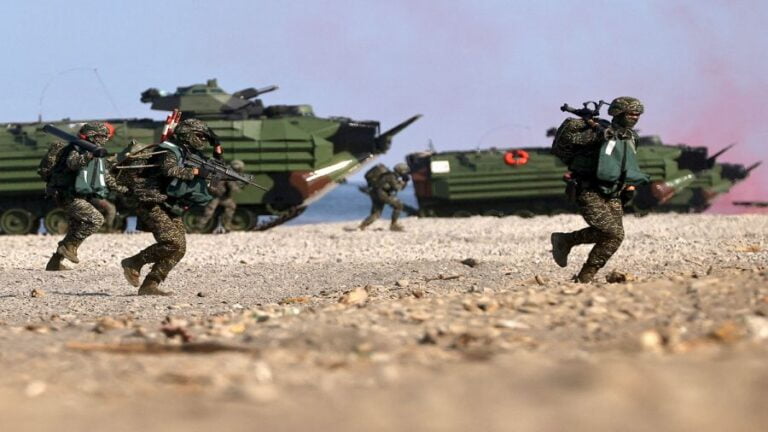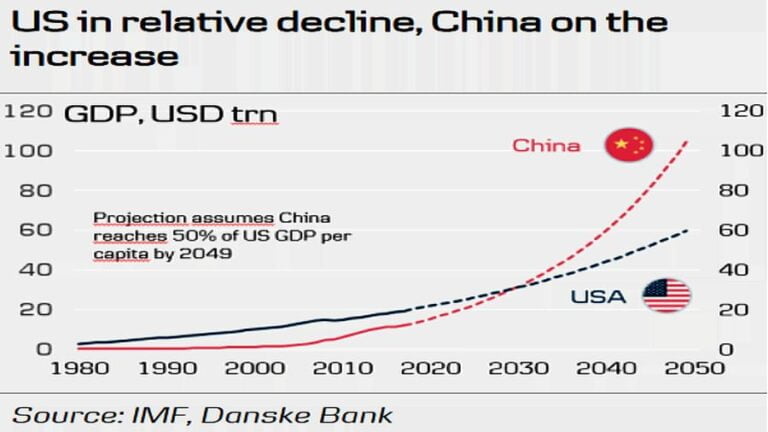“Hybrid War” and Its Impacts on Latin America
This is the full English-language original version of the interview that Andrew Korybko gave to Argentinian journalist Santiago Mayor, who then published a shortened form of it in the Buenos Aires newspaper “Tiempo Argentino”.
***
1. In your book about the theory of the Hybrid War, you review the different American geopolitical theories throughout history to arrive at the current project of the “Eurasian Balkans” and “peripheral chaos”. What does Washington’s geopolitical project consist of and how is it linked to the current multipolar world?
The US aims to retain its hegemony over Eurasia so as to indefinitely perpetuate its preeminent role over International Relations, to which end it’s employing a divide-and-rule strategy over the supercontinent via the external exploitation of identity conflicts for geopolitical ends. Many Eurasian states are very diverse, so it’s comparatively easier to meddle in their affairs through information warfare, NGOs, and other more “traditional” activities of its intelligence agencies. This takes the form of provoking Color Revolutions and civil wars, sometimes through the use of terrorist-driven means. The resultant chaos destabilizes the targeted state and thus enables the US to compel it into undertaking envisaged political concessions that work out to America’s supreme benefit. On a larger level, employing this policy in several states at once creates a chain reaction of chaos all along the Eurasian periphery that the US tries to channel for “containment” purposes against Russia, China, Iran, and others, but sometimes it loses control of the chaotic processes like in Syria where this scheme ultimately backfired to a large extent by creating the conditions for Russia’s game-changing anti-terrorist intervention which led to Moscow challenging Washington’s influence in the Mideast.
2. According to your research, to carry out the strategy of the “Eurasian Balkans”, the USA has developed the concept of the Hybrid War that it is much less expensive than a direct military intervention. This includes two forms of intervention or stages: the Color Revolution and unconventional Warfare. What are the differences between the first and the second? How and why do Color Revolutions sometimes transition to Unconventional Warfare?
Color Revolutions take advantage of preexisting identity conflicts within the targeted state, be they political, ethnic, religious, regional, or socio-economic, in order to bring a critical mass of protesters into the streets. The goal is to provoke violence between the protesters and the police, after which their clashes can then be exploited through information warfare to both encourage more civil unrest and serve as a trigger for international pressure on the targeted government. In the event that the state isn’t able to efficiently deal with the unrest, its continuance then leads to the scenario whereby some of the most radical protesters resort to increasingly more violent means to advance their agenda, including through political, military, and logistical support by the US and its regional allies that have a shared stake in pursuing the same goals. That phase where some protesters go from carrying signs to wielding arms is the transition from a Color Revolution to an Unconventional War.
3. Hybrid War has the advantage of not involving the USA directly in conflicts. How does the concept of veiled leadership come into play here? What concrete examples exist?
The US’ so-called “soft power” plays a role in signaling to the protesters that they have the country’s political support, which also hints that military and other forms of support could follow if they escalate tensions by carrying out acts of violence against the state since Washington believes that their actions are politically justified. The US then wages information warfare against the targeted government in order to delegitimize it by usually portraying the authorities as part of a “dictatorship” that is “attacking innocent civilians for no reason”. This in turn signals the commencement of a more intensified pressure campaign that runs the risk of transforming the Color Revolution into an Unconventional War with time. The US doesn’t have to directly get involved through “boots on the ground” since it’s cheaper and more effective to advance its agenda through proxies, both those that are on the payroll or influenced by its NGOs and intelligence services as well as the “useful idiots” who are duped into going along with everything for whatever their reason may be. The Hybrid War on Venezuela is a perfect example of this in practice.
4. Going to the specific mechanisms of Color Revolutions and Unconventional Wars, you talk about different moments: a phase of psychological preparation of the population; another of anti-government actions; and finally of assault on the government. What do these processes consist of? What role do social networks play in the organization of the population against a specific government?
Social networks are indispensable for catalyzing the Hybrid War process because they’re increasingly becoming the primary places through which people receive information and organize activities. They’re also very difficult for governments to control without shutting down the internet or banning those particular services, which is a step that most of them wouldn’t dare to take because they’d receive substantial pushback from the population except if carried out in times of crisis (and even then they remain very controversial). It’s through social networks that individuals from other countries and their in-country proxies (whether witting ones or “useful idiots”) can infiltrate protest movements and organize anti-government unrest in a way that serves foreign goals. Having said that, none of this should be interpreted as meaning that all protests are illegitimate and that social networks don’t play a role in organizing genuinely grassroots anti-government protests influenced by real well-intended causes, but just that they’re a double-edged sword that can be abused.
5. One of the important points of the Hybrid War is its indirect character (it does not attack the main objective) and adapted to chaos theory. Why is this more effective than a conventional confrontation? What are the advantages for the rebel movement?
Foreign patrons would prefer to advance their objectives through the most cost-effective means, both financially and militarily, which isn’t the case when they directly intervene in a country. It’s much cheaper to do so through proxies because that also gives the foreign organizers a degree of “plausible deniability” that they can rely upon in claiming that they aren’t violating international law by destabilizing the targeted government. Furthermore, direct support for protesters or “rebels” (be they insurgents, terrorists, or however else one may describe them depending on the particular context) can delegitimize their movement and expose them as foreign proxies, which in turn increases the legitimacy of the targeted government’s actions in responding to the Hybrid War attack. There’s a fine line that those countries waging Hybrid War on others must walk, but in general, keeping a “plausibly deniable” distance from the actual on-the-ground elements driving the unrest is usually the preferred method nowadays except when the benefits of more directly supporting them (such as with arms and intelligence) are thought to outweigh the reputational costs, like in Syria and Venezuela.
6. The Hybrid War is a recent and still developing phenomenon. Have mechanisms been generated to counteract it? Which would be the most effective?
Every Hybrid War, despite generally following the same pattern, is unique because of the specific proxies that are used, but what they share in common is an external attempt to provoke violent anti-government protests through social media and NGOs. Therefore, one of the most effective countermeasures is for states to proactively disseminate their own narratives through these means in a credible way, which is often indirectly through their own supporters who share the same agenda that they do (whether in retaining state stability more generally or in supporting a given political issue more specifically). There’s also a trend to follow Russia’s lead in banning some NGOs that constitute national security threats and labeling others that receive foreign support as foreign agents so that they’re targeted audience isn’t misled thinking that they’re purely indigenous. In addition, the tactical response by the law enforcement representatives reacting to the increasingly violent protests is also very important because the seemingly disproportionate use of force can be decontextualized and reframed as as “unprovoked aggression” which in turn could incite more unrest. Therefore, the best advice to targeted governments is to have a credible information system in place through their own on-the-ground supporters and to use caution when responding to anti-state provocations, taking care to film those tactical responses in order to debunk any weaponized fake news claims of “brutality” by exposing the protesters’ own actions that triggered their reaction (ex: throwing Molotov cocktails, rioting, and attacking innocent civilians).
7. Most of your analyzes, at least the ones I have read, focus on Eurasia. However, it is possible to find traces of the Hybrid War in Latin America. Just 10 years ago the region had several relatively autonomous governments and was moving towards independent regional integration. But there were different events that destabilized that process: the coup d’état to Dilma Rousseff in Brazil; against Evo Morales in Bolivia; the constant siege of Venezuela (perhaps the clearest case of the Hybrid War in the region). Do you consider that it is correct to analyze these facts as expressions of the Hybrid War or is it another phenomenon? Why?
Absolutely, those examples definitely constitute Hybrid Wars in Latin America and I’ve written about them before through that perspective. In those instances, the identity factor that’s exploited is usually political and socio-economic, and the Hybrid War commonality is that foreign forces provoked those crises through information warfare, NGOs, and other more “traditional” methods associated with hostile intelligence agencies. They took advantage of preexisting political issues in order to generate a protest movement that could then be comparatively more easily guided in the direction of their interests, which in those cases was regime change. On the one hand, they’re “less complex” than typical Eurasian Hybrid Wars in the sense that the identity factors are usually simpler (ex: left-wing vs. right-wing as opposed to different ethnic, regional, and religious groups colliding), but on the other hand they’re also “more complex” in some ways because of the very sophisticated information warfare component and the tactical evolution of those movements.
8. In Latin America the concept of lawfare has emerged. It’s refers to coordination between the media and the judiciary to target progressive and anti-Washington political leaders (whether or not they are in government) by accusing them of corruption crimes that are often never proven. Can this have any connection with the Color Revolution stage of the Hybrid War?
Yes, lawfare is a component of Hybrid Wars that’s being perfected in Latin America at this moment but has also been applied elsewhere as well like in the Republic of Macedonia, now known as the “Republic of North Macedonia” after the several-year-long Hybrid War finally succeeded and the foreign-imposed authorities unconstitutionally changed the country’s name per one of the US’ many objectives in that Hybrid War. What lawfare usually accomplishes in the Latin American case, however, is to either bar a genuinely grassroots-supported political figure from elections or delegitimize the targeted figure or government more generally, on top of also serving as a pretext (“trigger event”) for anti-government protests. It’s a very indirect process too because the foreign hand is rarely ever seen and everything superficially takes place according to the targeted country’s laws. The reason why it’s part of Hybrid War is precisely because of the foreign factor, whether in leaking seemingly incriminating corruption-related information or in speculatively pressuring those people involved in the legal process to reach a predetermined decision that advances that foreign state’s interests. Judging by the latest trends, lawfare will probably continue to play a more prominent role in Hybrid Wars all across the world because it accomplish some very important objectives with minimal effort so long as the system itself is fully understood by the Hybrid War practitioners and especially if some of its figures are co-opted.
9. Finally, beyond the cases of Ukraine and Syria, what do you consider to be the next objectives of the US Hybrid War worldwide?
Those two countries were used as the most prominent examples of Hybrid Wars in my book because they’re the most well known across the world due to the geopolitical impact that they’ve had, but many other countries are also being victimized by this process too, albeit in less dramatic ways that oftentimes aren’t as successful. China (specifically in Hong Kong and Xinjiang), Pakistan, Iran, and Turkey are cases in point, where Hybrid Wars against them have all failed, but each has taken different forms based on the unique situations in those countries. If the gist of the question is which potential targets might be as dramatically affected as Ukraine and Syria were, well, it’s hard to predict because that would depend a lot on the targeted state’s response and whether potential Color Revolutions successful transition into Unconventional Wars, and also whether either of the two can be sustained, let alone succeed in their goals. These are more tactical variables that can’t be known in advance. If the question is about which other countries might be targeted in general, apart from the three already mentioned, every country (especially non-Western ones) has their own Hybrid War vulnerabilities, but it just depends on what degree of preexisting tension there already is in those societies, whether or not a “trigger event” is forthcoming or can be manufactured (ex: claims about “disputed elections”, “corruption”, etc.), the level of social media and NGO penetration, the geopolitical goal(s) being pursued, and whether the US has the political will to escalate nascent Color Revolutions into Unconventional Wars in each case.
By Andrew Korybko
Source: One World







